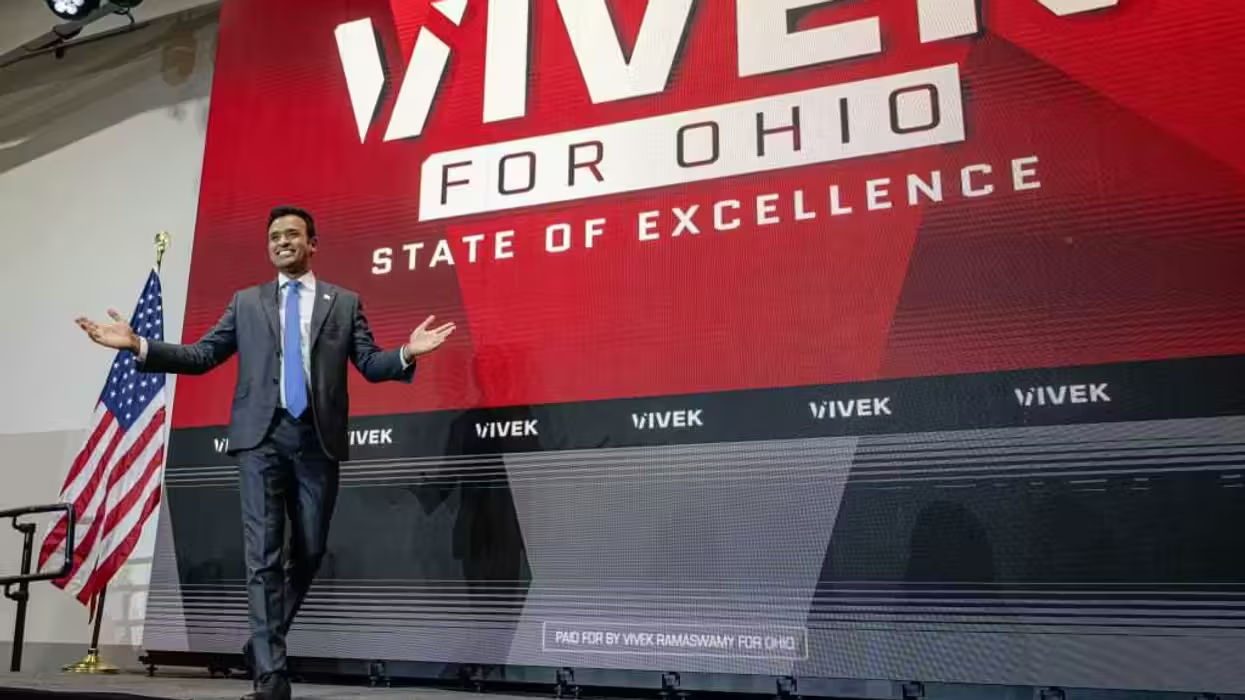
© 2025 Blaze Media LLC. All rights reserved.
Paper money that can be read by the blind likely delayed until 2020
September 26, 2014
The Government Accountability Office released a report Friday that said the Bureau of Engraving and Printing has fallen behind in its plans to produce U.S. paper money with raised bumps on them than visually impaired people can read behind.
The Bureau's quest to produce these "tactile features" on U.S. current stems from a 2002 law suit against the Treasury Department by the American Council of the Blind. As a result of that suit, a Washington DC court ordered Treasury to make its currency more accessible to the blind and those with vision problems.
In 2011, the Treasury Department approved a three-pronged plan that includes making the denominations on bills easier to read, providing small currency readers to people, and creating money with raised bumps that can be read by hand.
Treasury has approved a design for the raised bumps that it hopes to test in the coming years.
 This graphic shows one possible way that raised bumps could be placed on paper money to help the visually impaired read the value of the money they hold.
This graphic shows one possible way that raised bumps could be placed on paper money to help the visually impaired read the value of the money they hold.
Source: GAO
But the GAO report said the government has had several problems with the last idea. These include worries about cost and whether the raised feature will simply wear off as the notes are circulated. There are also worries about whether the money would still be able to be processed through currency-counting equipment used by banks.
"BEP officials stated that they have not yet determined how these concerns might be addressed," GAO said. "Advocates for organizations representing visually impaired persons consider a tactile feature to be important and are concerned about the length of time it is taking BEP to provide access to currency."
GAP reported that some believe the plan for a tactile feature should be scrapped, particularly in light of a new smartphone app called EyeNote that could help people determine the value of the paper money they hold.
Still, the government appears to be pressing on with plans to create a "tactile feature" on paper money. But the plan has been delayed by at least a few years.
Treasury was originally scheduled to choose a method for applying the raised features by 2013, but that deadline came and went. The new deadline is next March, and GAO estimated that notes that can be hand-read may be out by 2020, according to the tentative schedule set by the Bureau of Engraving and Printing.
In light of that delay, GAO encouraged the government to focus on the currency reader while the plan for a tactile feature is developed. The government says it expects to spend $35 million over the next few years handing out small currency readers to visually impaired people.
Want to leave a tip?
We answer to you. Help keep our content free of advertisers and big tech censorship by leaving a tip today.
Want to join the conversation?
Already a subscriber?
more stories
Sign up for the Blaze newsletter
By signing up, you agree to our Privacy Policy and Terms of Use, and agree to receive content that may sometimes include advertisements. You may opt out at any time.
Related Content
© 2025 Blaze Media LLC. All rights reserved.
Get the stories that matter most delivered directly to your inbox.
By signing up, you agree to our Privacy Policy and Terms of Use, and agree to receive content that may sometimes include advertisements. You may opt out at any time.






